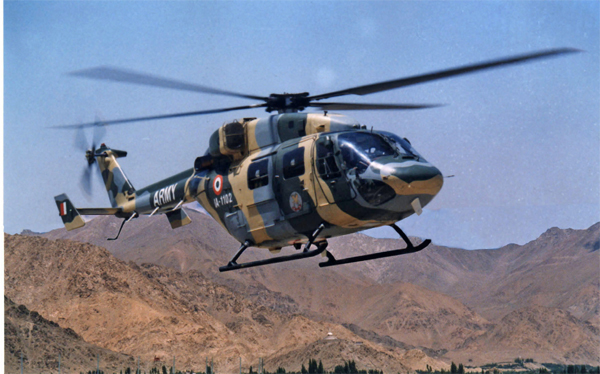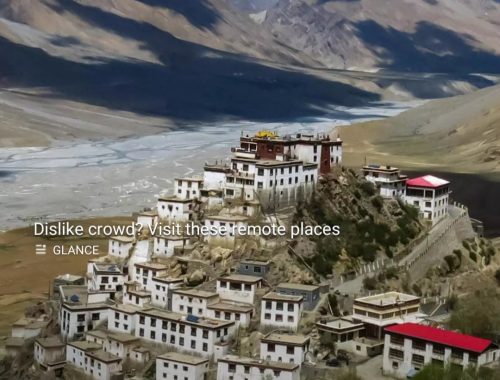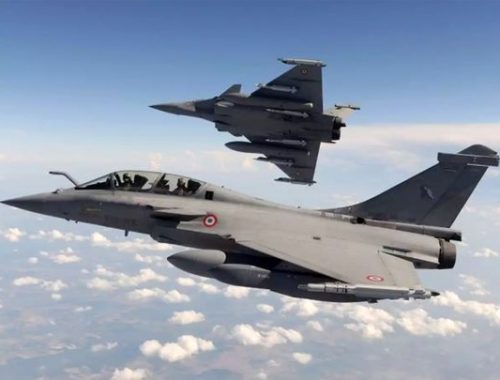New Delhi: The Commander-level talks between India and China in Moldo on the Chinese side of the Line of Actual Control (LAC) on Monday have been fruitful as both the sides decided to disengage the forces locked in a bitter standoff for the last six weeks in eastern Ladakh.
Amid escalating tension following the killing of 20 Indian soldiers in a clash at Galwan Valley on June 15 night, nearly 11-hour-long talks were held in a “cordial, positive and constructive atmosphere” to decide the modalities for disengagement from all areas in eastern Ladakh. Similar talks were earlier held on June 6, but China backtracked from its stand.
Army Chief General Manoj Mukund Narwane’s second visit to Leh since the faceoff started between the troops of India and China since May 5 holds a great significance. He met injured soldiers of the Galvan Valley prior to meeting Army Commanders in Ladakh and the local MP.
Sources told media that the Army Chief was briefed about the Commander-level talks as the attention has now shifted to Pangong Lake, where Chinese soldiers are currently stationed with all their military paraphernalia for about one and a half months. They are about 8 kilometers inside the LAC.
Amid positive indications of Commander level talks, India’s Ministry of External Affairs said that both the nations have agreed to reduce tension and create peace through dialogue. Talks are being held at both military and diplomatic levels, but the question is how to trust China.
Indian Army is now adamant that the Chinese troops will have shift behind the LAC in the same position where it was before May 2. After the Galwan Valley, the bone of contention between India and China is now Pangong Lake. India has raised its objections to China’s occupation from Finger 8 to Finger 4 in the Pangong Lake. On May 5, the scuffle between Indian and Chinese soldiers first started at Pangong Lake.
The nearly 3500-kilometer long border between India and China passes through plains and mountains, but in the Pangong Lake, LAC passes through water. The lake is situated 13900 feet high covering a length of about 134 kilometers. Of this, about 66 percent is occupied by China as the lake originates from Tibet.
Since Pangong Lake passes through mountains, lower parts of these mountains are called fingers because of their finger-like shape. Finger 4 is occupied by India which also has a post between Finger 3 and 4. Indian Army patrols from west to east till Finger 8 considering its claims till this region.
China, however, extends its claim till Finger 2 and to monitor that it has made a military post on Finger 8. The latest row started when China objected to the Indian Army’s patrolling till Finger 8, and later occupied 8 km area between Finger 8 and Finger 4, besides building bunkers.
China wants to occupy areas near Galwan and Pangong Lake which have otherwise been part of India or have been subject to dispute between India and China. This appears to be the reason why China does not want to settle the border dispute with India. As it will not be able to trespass into Indian territories. Knowing this, India also wants to curb Chinese action near Pangong Lake.
Zee News earlier told you that the mastermind of China’s misadventure on the LAC is General Zhao Zhongqi, who is the Commander of the Western Theater Command, which is deployed against India. The way the Chinese Army made incursions at several places along the LAC is reportedly the handiwork of General Zhongqi.
The 73-day-long Doklam dispute of 2017, when Indian soldiers stood like a rock in front of Chinese and finally China had to retreat. The mastermind of the Doklam was General Zhongqi, who once again made incursions in the Eastern Ladakh and created an embarrassing situation for China.
Zhao Zhongqi is said to be the blue-eyed boy of President Xi Jinping. General Zhongqi reportedly wants to become vice chairman of China’s powerful Central Military Commission (CMC), which is headed by President Xi.
The CMC takes important decisions related to the Chinese military. The PLA’s misadventure in the Galwan Valley under General Zhongqi’s command appears to have President Xi Jinping’s consent.
But the situation at Pangong Lake still continues to be the big bone of contention as the dialogue was held amid a massive build at the Line of Actual Control (LAC).
Sources said discussions are likely to continue and a plan for de-escalation will be drawn out.
Other than Pangong Lake, where the Chinese troops are occupying the Finger 4 area of the lake that has been traditionally under Indian control, situation in Galwan Valley, where troops continue to hold guard from both sides, was also discussed.
Not only have the Chinese come and camped in big numbers on the northern bank of the lake, but also enhanced their fortifications, observation posts and troop deployment between Finger 4 and Finger 8 that was considered a grey zone even though India has claimed territory till Finger 8.
The lake is divided into 8 fingers. In military parlance, the mountainous spurs jutting out into the lake are referred to as fingers.
Like in the earlier meeting on June 6 between the top commanders, India has been asking for status quo to be restored to what it was before the May buildup.
Meanwhile, Indian Army chief Gen MM Naravane will be visiting Ladakh on Tuesday in the backdrop of a continued troop buildup at the Line of Actual Control (LAC) after the violent clash of June 15 in which 20 Indian soldiers were killed while the Chinese also suffered casualties.
The visit is planned to assess the operational preparedness and get a first-hand account of the ground situation from the commanders there.
The army chief’s visit comes a day after the marathon meeting of Corps Commanders of Indian and Chinese armies on Monday that went on for 11 hours.
The army chief on his two-day visit is also expected to visit Srinagar amid heightened anti-terror operations.
The military brass including top army commanders from across the country are meeting in Delhi to make an assessment of preparedness both on the Pakistan and China borders.




